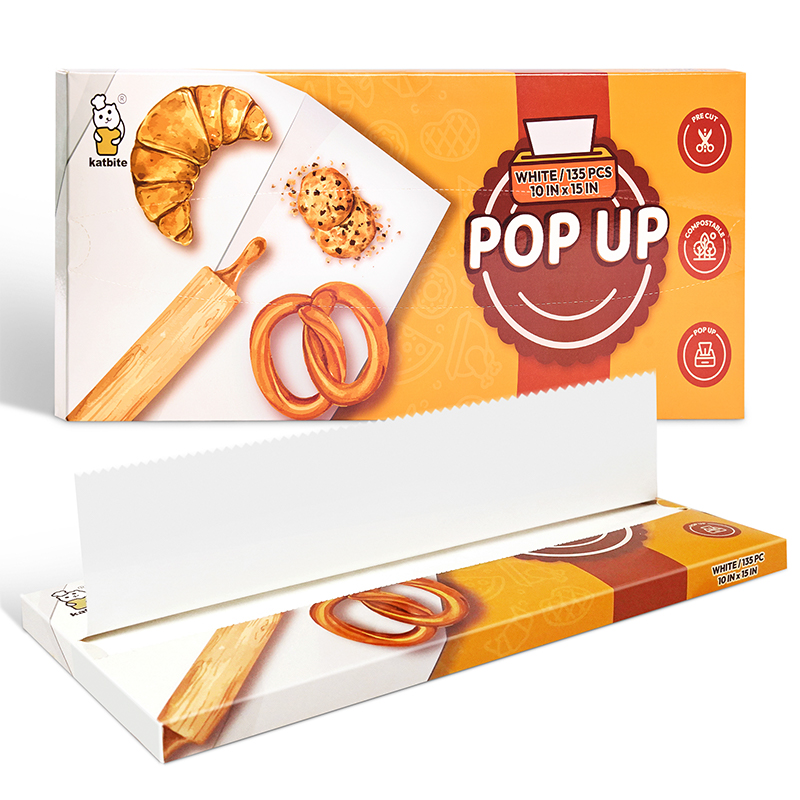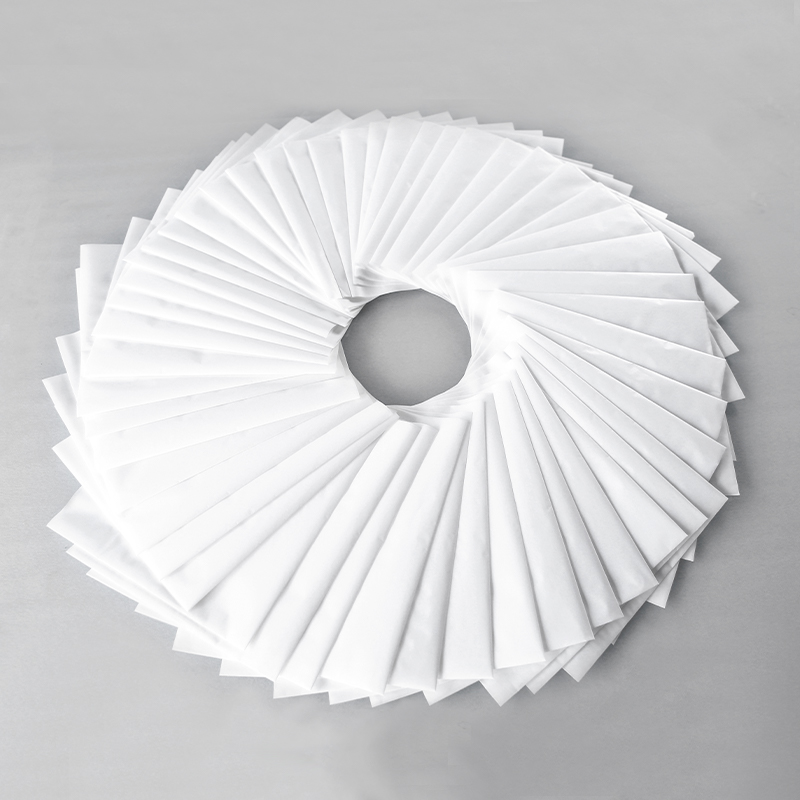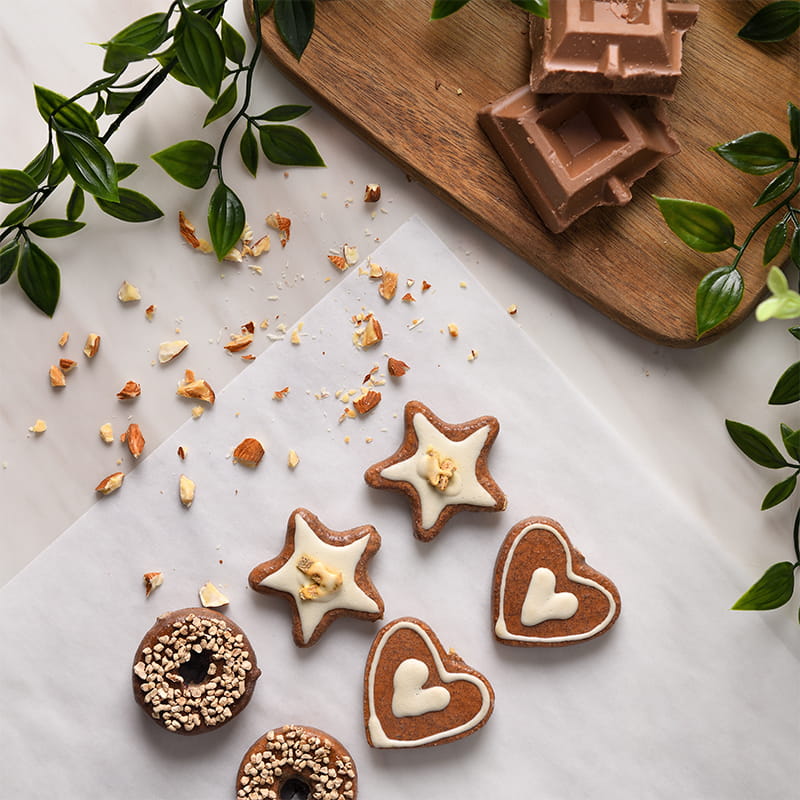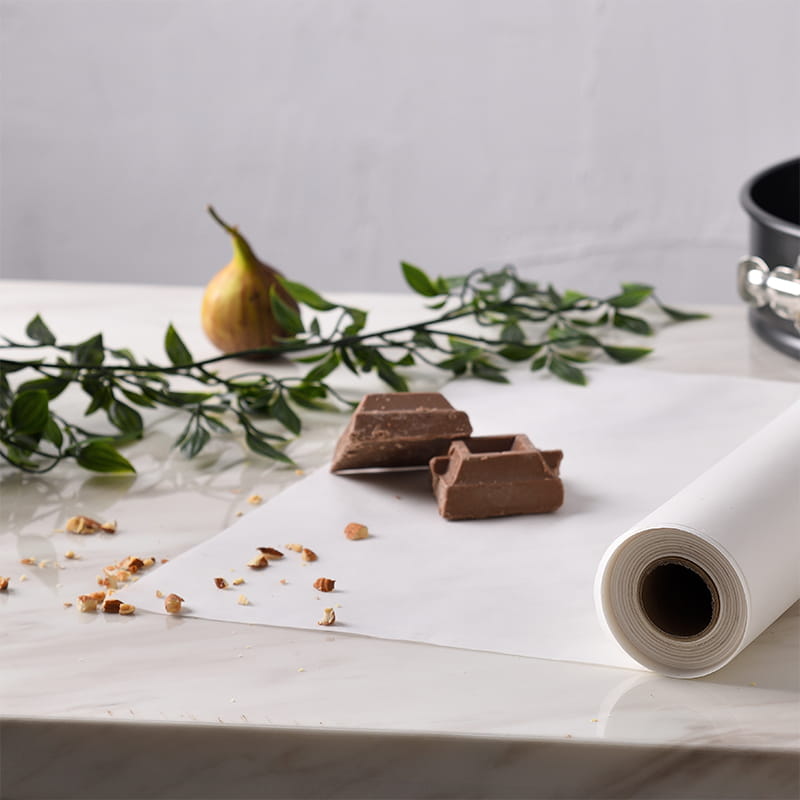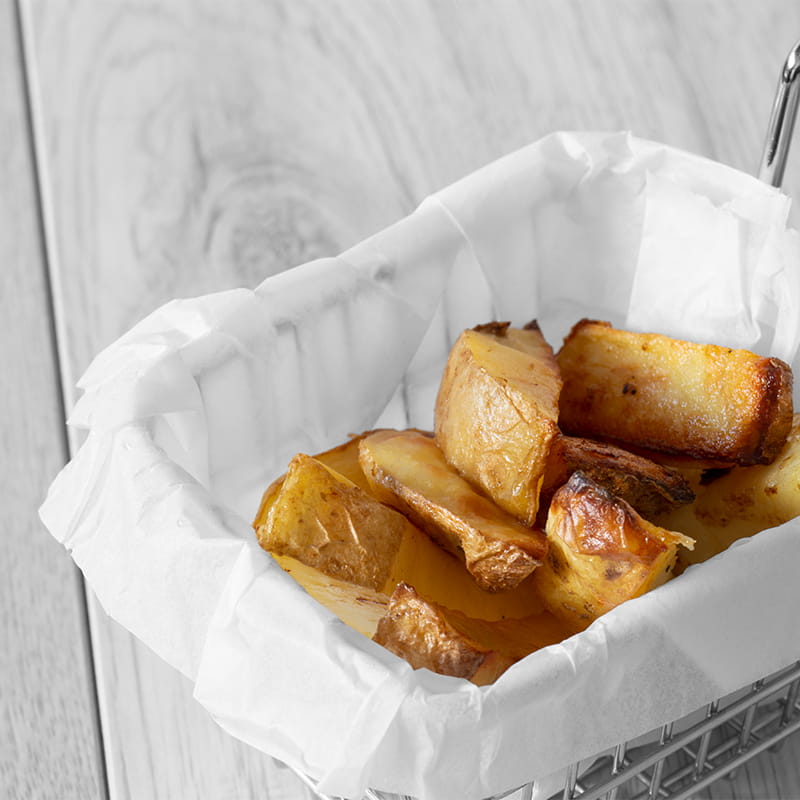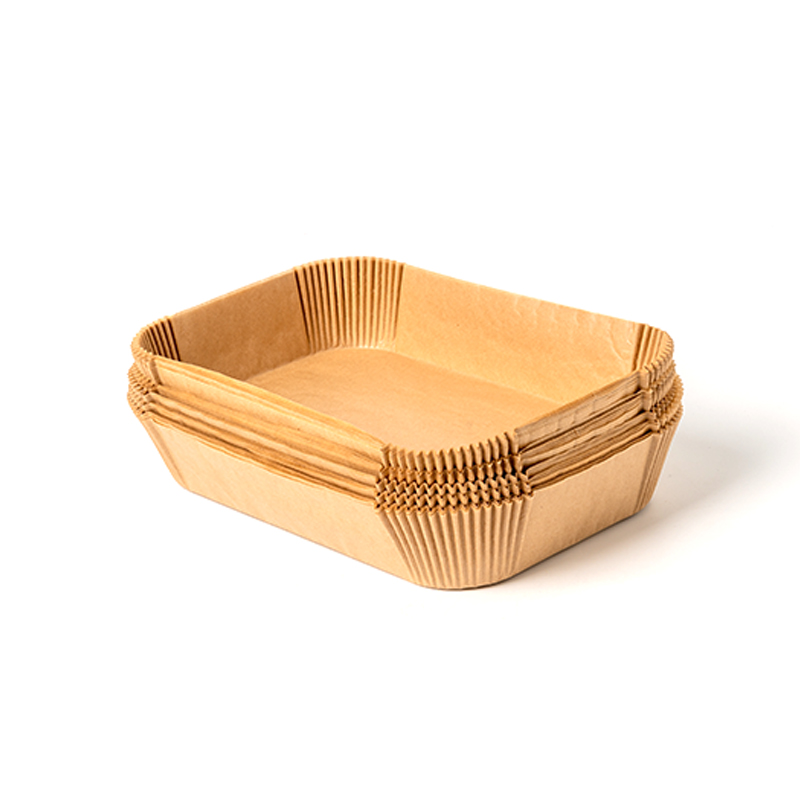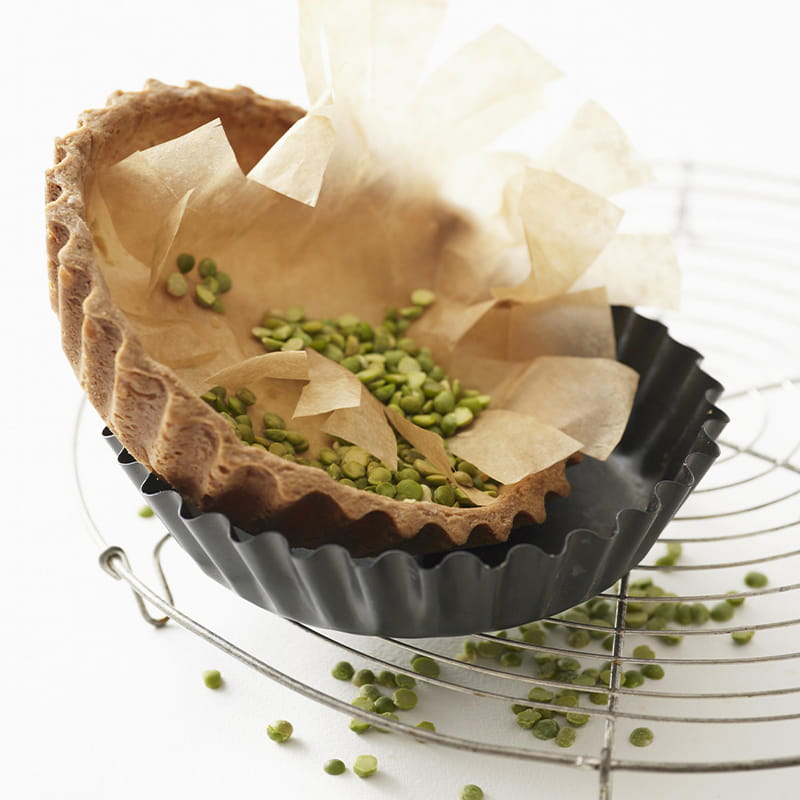Product details: Pop-up parchment paper sheets, an environment-friendly product, are composed of wood pulp and are double-side coated with silicone. Such a coating makes our paper smooth, greasepr...
See DetailsUnderstand the safety of Guanghe parchment paper
Parchment paper remains a staple in kitchens worldwide, prized for its non-stick properties and ability to simplify cleanup. A recurring question, however, centers on its safety: Is parchment paper safe for baking and cooking? Generally, parchment paper is recognized as a safe kitchen tool when used appropriately. Modern manufacturing processes focus on creating products suitable for high-heat food preparation without leaching harmful substances. Understanding its composition, proper usage, and exploring related considerations provides a well-rounded perspective on its safety profile.
The Composition of Parchment Paper: More Than Just Paper
Modern parchment paper bears little resemblance to its historical namesake made from animal hides. Today's kitchen parchment is crafted from wood pulp cellulose fibers undergoing a transformative process. This process differs significantly from standard papermaking and is key to parchment's unique properties:
1.The Sulphuric Acid Bath (or Alternative Processes): The cellulose fibers undergo treatment, traditionally involving sulphuric acid or sometimes alternative chemical or physical processes. This treatment partially dissolves the surface fibers.
2.Reconstitution and Gel Formation: The dissolved surface material reconstitutes into a smooth, dense, gelatinous layer as the acid is washed away and the paper is dried under heat.
3.Non-Stick and Heat-Resistant Surface: This reformed gelatinous surface layer is what gives parchment paper its signature characteristics:
Non-Stick: Creates an effective barrier preventing food adhesion.
Heat Resistance: The dense structure withstands typical baking temperatures far better than untreated paper.
Resistance to Grease and Moisture: Offers a barrier against oils and liquids.
4.Silicone Coating (Modern Standard): Crucially, more parchment paper available today undergoes an additional step: coating with a thin layer of food-grade silicone. This silicone coating significantly enhances the non-stick performance, eliminates the need for greasing, and contributes to its heat resistance and moisture barrier properties. It's generally inert and stable at baking temperatures.
Addressing Potential Concerns:
Bleaching: Some parchment papers are bleached white for aesthetics using chlorine or chlorine-free processes (TCF or ECF). While bleached papers are generally considered safe for intended use, unbleached (natural brown) parchment paper offers an alternative for those preferring to avoid bleaching agents altogether.
Silicone Safety: Food-grade silicone, used in parchment coatings and countless other kitchen tools (spatulas, bakeware), is extensively tested and recognized as stable and non-toxic within typical cooking temperature ranges. It does not readily migrate into food under standard baking conditions.
Using Parchment Paper Safely: Best Practices
While inherently safe when manufactured correctly, peak parchment paper's safety hinges on proper usage. Here are key principles to follow, expanding on the initial points:
Respect Temperature Limits: This is paramount. Always consult the manufacturer's packaging for the specific peak temperature rating. Exceeding this limit risks:
Breakdown: The paper can scorch, brown excessively, become brittle, lose its non-stick properties, and potentially break apart.
Smoke: Overheated paper can produce smoke, affecting food flavor and air quality.
Fire Hazard: While not common in standard ovens under normal use, very overheating significantly increases the risk of ignition, especially near direct heating elements. Avoid using parchment directly under a broiler element or in toaster ovens where it might contact heating coils.
Avoid Direct Flame/Intense Heat Sources: Never place parchment paper over an open flame (like on a stovetop burner) or in direct contact with intense heating elements (broilers, toaster oven coils, grill flames). Direct contact can cause immediate ignition.
Single-Use Recommendation: Parchment paper is engineered for single use. Reusing it carries risks:
Degraded Non-Stick Layer: Previously baked-on residues compromise non-stick performance.
Structural Weakness: Heating weakens the fibers, increasing the likelihood of tearing or puncturing during subsequent use, exposing food to the pan surface or causing spills.
Increased Burning Risk: Previously browned or scorched areas are more susceptible to burning at lower temperatures.
Proper Storage: Maintain parchment quality by storing rolls or sheets in a cool, dry place. Avoid humid environments (like under the sink) as moisture can affect the integrity of the paper and its coatings. Handle with clean, dry hands to prevent transferring oils or debris.
Application Awareness:
High-Temp Tasks: For applications requiring very high sustained heat (e.g., certain types of candy making, high-temperature roasting), ensure your parchment is rated for those temperatures. Specialty high-heat parchment options exist.
Air Fryers: Use parchment cautiously in air fryers. Opt for perforated parchment specifically designed for air fryers to prevent blocking crucial air circulation, which can cause to uneven cooking and potential fire hazards. Always follow the air fryer and parchment manufacturer's guidance.
Cutting: Avoid cutting directly on parchment paper with sharp knives, as this can scrape silicone coating fragments onto food and damage surfaces underneath. Use a cutting board.
Understanding Limitations: Parchment paper is good for baking cookies, lining cake pans, roasting vegetables, and packet cooking. However, it's not designed for:
Microwaving: Microwaves interact differently with materials. While brief microwave use might be acceptable for steaming or covering, prolonged use isn't recommended. Wax paper is strictly unsuitable for microwaving due to its wax coating.
Wax Paper Substitute: Wax paper, coated with paraffin or soybean wax, melts at relatively low oven temperatures, making it unsafe for baking. Never substitute wax paper for parchment in the oven.
Exploring Alternatives: Balancing Convenience and Sustainability
While parchment paper is convenient, considering alternatives can be part of a thoughtful kitchen approach:
Silicone Baking Mats: These reusable mats offer good non-stick performance and durability. They are a significant upfront investment but eliminate ongoing waste. Ensure they are food-grade silicone and rated for your cooking temperatures. They require proper cleaning and storage.
Greasing Pans: The traditional method of greasing pans with oil, butter, or cooking spray is effective but can sometimes cause to residue buildup and potentially tougher cleanup than parchment. Spray oils can contain additives.
Oiled Foil: Aluminum foil can be lightly oiled for a non-stick effect but isn't as naturally non-stick as parchment. Concerns sometimes arise about cooking acidic or salty foods on foil for extended periods.
Reusable Parchment?: True reusable parchment paper doesn't exist. Silicone mats are the reusable alternative. Some companies market thicker, "reusable" parchment, but its lifespan is limited compared to silicone mats and frequent reuse increases the risks mentioned earlier.
Comparing Common Pan Liners
|
Feature |
Parchment Paper |
Silicone Baking Mat |
Wax Paper |
Oiled Aluminum Foil |
|
Primary Use |
Baking, roasting, packet cooking |
Baking, roasting (reusable) |
Cold prep, wrapping food |
Covering, wrapping, occasional lining |
|
Max Heat |
Varies (Typically 420-450°F / 215-230°C) |
Varies (Often up to 480°F / 250°C+) |
Low (Not oven-safe - wax melts) |
High (But can tear, stick) |
|
Non-Stick |
Excellent |
Excellent |
Good (cold only) |
Good (Only when oiled) |
|
Reusable |
Single-use recommended |
Yes (Many uses) |
Single-use (if used cold) |
Single-use |
|
Cleanup |
Very easy (Discard) |
Easy (Wash) |
Easy (Discard) |
Moderate (Can stick, scrubbing needed) |
|
Key Safety |
Avoid overheating, direct flame |
Ensure food-grade, avoid sharp objects |
Never use in oven or microwave |
Avoid cooking acidic/salty foods for long periods |
Conclusion: A Secure Choice for the Informed Cook
Parchment paper, when manufactured to food safety standards and used correctly within its defined parameters, is widely recognized as a safe and reliable tool for baking and cooking. Its fundamental safety stems from its composition – chemically treated cellulose forming a heat-resistant base, typically coated with stable, food-grade silicone for exceptional non-stick performance. Understanding this composition demystifies its functionality and safety.
Adhering to usage guidelines, particularly respecting temperature limits and avoiding direct flame exposure, is crucial for mitigating any potential risks. While convenient, acknowledging its single-use nature encourages exploration of reusable alternatives like silicone baking mats as part of a broader approach to kitchen sustainability. Ultimately, parchment paper offers significant benefits: promoting even baking, preventing sticking, simplifying cleanup, and reducing the need for added fats.
By making informed choices – selecting products from reputable sources, reading packaging instructions carefully, considering unbleached options if preferred, and employing safe handling practices – home cooks can confidently leverage the advantages of parchment paper. Its role in facilitating easier, less messy, and successful cooking outcomes makes it a valuable addition to a well-equipped and safely managed kitchen.
Click www.guanghepaper.com/ to reading more information


 English
English 中文简体
中文简体